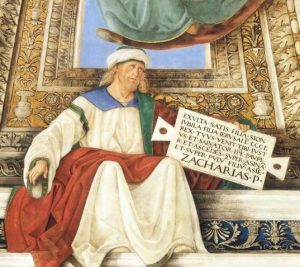Call for Papers:
The Glory of Inscriptions: epigraphic writing, classical architecture and monumental art in the Renaissance (15th-17th century)
Two of the most remarkable aspects of the Imitatio Antiquitatis in the Renaissance are the taste for inscriptions among the humanists and the imitation of ancient epigraphy in the field of the arts. The desire to surpass the Ancients, especially in the art of inscription, is particularly noticeable in architecture and in the various forms of monumental art. Motto, titulature, praises and dedications, tituli of saints, consecrations of monuments, funeral epitaphs, poems or simple distiches, all’antica signatures, etc. – inscriptions are numerous on public monuments, churches facades, palaces portals and courtyards, but also in mural painting, on large-scale sculptures, in ephemeral decorations for feasts or royal processionals, and even on engineered structures such as bridges. During the Renaissance, as in the Greco-Roman civilization, the writing of monumental inscriptions was praised as an art and epigraphic texts were generally considered a major element of composition: a written form, endowed with aesthetic qualities, which visually enriches the building or the work of art, but also in some cases reveals its meaning, origin or ambition.
Historians of art or architecture as well as philologists are invited to apply to this panel which will study the practice of Greek, Latin, hieroglyphic and Hebrew inscriptions in the field of monumental art between the fifteenth and the seventeenth centuries. Speakers may also consider the formal characteristics of the inscriptions as well as their literary sources, the identification of their authors, the methods of writing, the layout of texts and their conditions of reading in a monumental composition. We shall also endeavor to identify literary genres and interpret the inscriptions, as well as assessing, at each level of art historical analysis, the properties and mechanisms of the artistic devices. What kind of relationship can be drawn between the form, layout and content of inscriptions and the questions of style, composition or distribution in architecture? How did they affect the different categories of viewers, who were not always able to read and understand the texts? What is the place of inscriptions in the figurative arts, in artistic theory and in the practice of the great masters? If easel painting tends to banish the texts, mural painting, monumental sculpture and religious furnishings, on the contrary, place them in the forefront. The case of Michelangelo, who generally avoided inscriptions, is all the more interesting as he had a singular talent for writing. In the range of sacred art, it will also be possible to study how and to what extent the Tridentine injunctions (docere, movere, delectare) changed the practice of inscriptions in religious architecture, church decoration and liturgical furnishings from the second half of the 16th century onward.
Please send proposals to Anne Lepoittevin, Anne.Lepoittevin@u-bourgogne.fr and Emmanuel Lurin, Emmanuel.Lurin@paris-sorbonne.fr by Sunday, 28 May 2017.
As per RSA guidelines, proposals must include the following: paper title (15-word maximum), abstract (150-word maximum), keywords, and a brief curriculum vitae (300-word maximum). See http://www.rsa.org/general/custom.asp?page=2018NOLA


Leave a Reply
You must be logged in to post a comment.